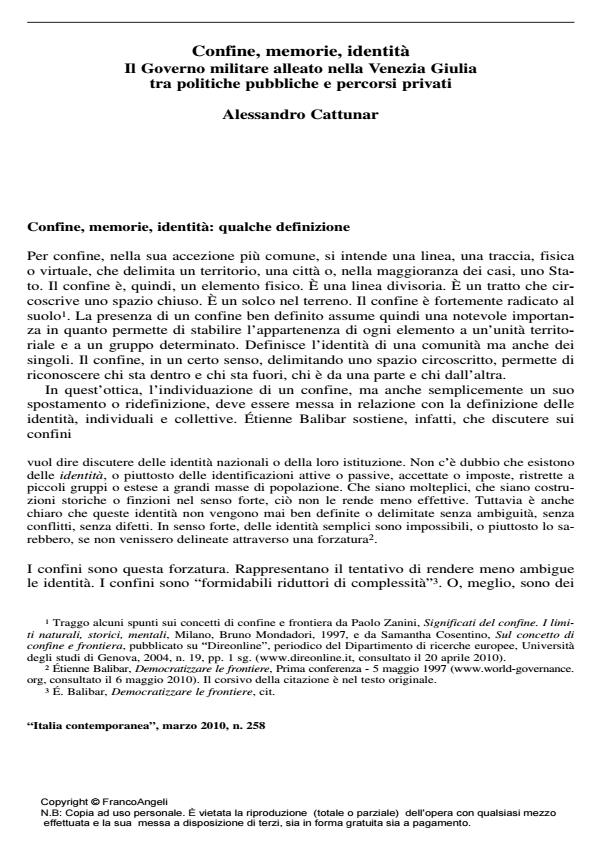Confine, memorie, identità Il Governo militare alleato nella Venezia Giulia tra politiche pubbliche e percorsi privati
Titolo Rivista ITALIA CONTEMPORANEA
Autori/Curatori Alessandro Cattunar
Anno di pubblicazione 2010 Fascicolo 2010/258
Lingua Italiano Numero pagine 31 P. 26-56 Dimensione file 352 KB
DOI 10.3280/IC2010-258002
Il DOI è il codice a barre della proprietà intellettuale: per saperne di più
clicca qui
Qui sotto puoi vedere in anteprima la prima pagina di questo articolo.
Se questo articolo ti interessa, lo puoi acquistare (e scaricare in formato pdf) seguendo le facili indicazioni per acquistare il download credit. Acquista Download Credits per scaricare questo Articolo in formato PDF

FrancoAngeli è membro della Publishers International Linking Association, Inc (PILA)associazione indipendente e non profit per facilitare (attraverso i servizi tecnologici implementati da CrossRef.org) l’accesso degli studiosi ai contenuti digitali nelle pubblicazioni professionali e scientifiche
Il saggio propone un’analisi dei legami tra confine, identità e memorie nella Venezia Giulia, e in particolare nel Goriziano, durante l’amministrazione del Governo militare alleato (Gma). In qust’area questo periodo è cruciale per la definizione della linea di confine tra Italia e Jugoslavia. Per la popolazione, è un momento di passaggio da un sistema di identità plurime, fluide e cangianti a una contrapposizione nazionale e politica alquanto netta. Anche in seguito ai traumi subiti negli anni precedenti, infatti, gli individui e i gruppi riformulano i parametri per definire se stessi e "gli altri" selezionando eventi e momenti della storia passata e ponendoli a fondamento della propria identità. Tali dinamiche si riflettono sull’affermazione di memorie differenti e spesso antitetiche. L’autore studia sia la dimensione pubblica/istituzionale, sia quella privata delle emozioni, dei sentimenti, delle singole scelte quotidiane principalmente attraverso l’analisi delle interviste e dei racconti di vita dei testimoni: fonti orali che vengono confrontate e fatte interagire con i documenti ufficiali che descrivono l’attività del Gma e le relazioni tra questo e i diversi gruppi nazionali e culturali presenti sul territorio.
Parole chiave:Governo militare alleato; Venezia Giulia; confine; memorie; identità; storia orale
Alessandro Cattunar, Confine, memorie, identità Il Governo militare alleato nella Venezia Giulia tra politiche pubbliche e percorsi privati in "ITALIA CONTEMPORANEA" 258/2010, pp 26-56, DOI: 10.3280/IC2010-258002